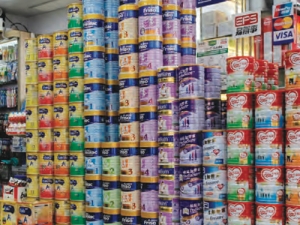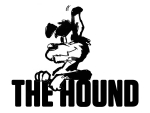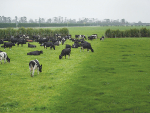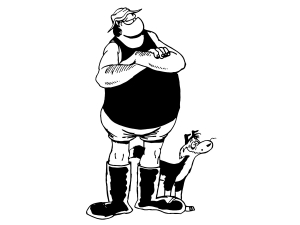This latest round of events in Australia with milk price being slashed to farmers (putting younger more geared farmers significantly into the red), and the value of shares listed during the largest capital raising in Australian dairy industry history shedding 60% (MG Unit Trust), does not auger well to grow Australia's milk output, which has been in decline.
At Ausfine, I have been fortunate to gain a global dairy perspective - we deal with suppliers of product from every main producing region, and export to every major market.
The stand-out to me is the lack of transparency and lack of risk mitigation "end to end" in the Australian dairy industry.
The Australian industry is competing for a dwindling pool of milk and seems reluctant to change.
Is the industry simply shuffling the deck chairs on the Titanic? Or should it change the tune the band is playing, and change course now?
The out-dated milk pricing model which exists in Australia needs to become progressive and attractive for investment.
Currently, given the opening price and forecasted price are calculated based on forecasts of volatile commodity prices and foreign exchange rates, they are basically out of date as soon as the ink is dry.
Step-ups or step-downs are usually retrospective and can get back calculated on all milk supplied since the start of the financial year.
This means farmers are either receiving cash flow well after they needed it to grow production during the year when prices were high and supply was needed; or, they are left with the potential for clawbacks, which in the current scenario will be paid back over the next three years.
The inflexibility of the above system poses as many issues for buyers of milk (processors /manufacturers) as it does for the sellers (dairy farmers).
In the past we have seen some manufacturers borrow to either prop up milk prices to farmers when the prevailing market cannot support it, or invest in new production capacity to chase higher returning markets.
That can only work if the debt can be paid back on the next "bounce" in commodity prices – or if "value-add" efforts are fully realised.
If prices and returns don't rebound quick enough, and the banks aren't willing to keep on lending, then the music stops.
This pricing system harks back to the days when majority of milk was supplied to cooperatives who owned the processing assets, and the attitude was "we're all in, no matter what, so let's do the best we can, keep a bit up the sleeve, and, announce step-ups after we see how things pan out".
However, the Australian dairy industry has changed considerably in the past decade or so.
The historical model where the co-op also owns all the processing assets is no longer the majority.
Coupled with this are unique and complex milk pricing models offered by co-ops and processors, based on geographical location, seasonality, milk composition, etc.
There are also other incentives and deterrents for farmers to stay, or switch, unique to the current party they contract their milk to.
It would take a panel of advisors (knowledgeable in milk composition, contract law, cost accounting and dairy seasonality) weeks just decide what is the best deal for each unique farmer - let alone a farmer milking the cows twice a day and running a dairy farm.
Due to this lack of transparency on milk pricing and its retrospective nature, the ability for the industry to hedge price risk "end to end" is largely lacking.
Dairy farmers therefore remain the "risk mitigants" for the Australian Industry.
There is both a lack of transparency and no efficient way for a farmer to hedge against this risk. The milk price is always "subject to final confirmation".
The industry needs to be developed where companies and new entrants can grow new milk, as opposed to try and attract from the existing pool.
To do this, Australian dairy segment needs to attract investment, which can be partly achieved by promoting transparency and developing some real risk management tools such as exchange traded futures contracts, which all participants can use; farmers, processors, investors and buyers of Australian dairy products and ingredients.
Many of our competitors have more transparent milk pricing models, as well as commodity futures exchanges trading dairy, where market participants can efficiently hedge their risk and take signals from futures to make more informed decisions of future market trends.
Futures signals are a collective and somewhat unbiased view of the total market, (all collective participating buyers and sellers).
This view of the market can be used by participants (farmers / processors / manufactures / investors / buyers), coupled with their own views and other views from management, to make informed decisions.
The USA has the most liquid and sophisticated dairy futures market, based around national milk price transparency and a suite of CME (Chicago Mercantile Exchange) dairy futures.
Many "Dairymen" in the US use futures, often via the manufacturer or co-op who contracts their milk, in order to protect their margin and provide banks and lenders with comfort over their capital.
Processors in the US largely remove price risk from their "things to worry about" and focus on improvements in efficiencies, scale, technology and product development to gain an edge in the market and achieve success.
Buyers of US finished product can also use CME tools to hedge out price fluctuations and provide their customers or consumers with long term flat pricing which is particularly important when dealing with retailers or food service customers.
This can often provide an advantage for US producers when negotiating longer term deals with retail and food service buyers who need fixed long term pricing.
New Zealand launched Dairy Futures on the NZX a number of years ago. Europe is also active in developing dairy risk management across the value chain – there are dairy product futures on the EEX (European Energy Exchange) which are being used by manufacturers to give fixed milk prices to their farmers.
Liquidity on the exchange and risk management will become more sophisticated and continue to grow.
Cooperatives and processors in Australia which I have raised my views with have countered that they can mitigate the risk for their farmer suppliers through value-add and product mix.
But value-adding ultimately does not remove one from the global supply and demand trends in milk pricing.
It is not a short term solution, it is not without its own risks, and it is not a risk mitigation for pricing volatility.
Providing true risk mitigation tools to manufacturers means they can maintain focus on a smaller area of expertise through periods of volatility, and, to create value can become leaders in that segment through innovation, or, scale up production to run more efficiency, or ideally both.
Rather than lagging the rest of the world with regards to transparency surrounding milk pricing, Australia has the opportunity to turn the negative course of recent events into a positive and become one of the more progressive global dairy suppliers.
Sure, open transparent markets with futures exchanges do not stop the inevitable supply/demand boom/bust commodity cycles, but they do allow the risk to be spread from solely farmers, to other market participants.
If Australian dairy farmers could access that information and see the forward view, even better; take commercial advantage to lock in a premium price in the future if it suited their circumstance. It may assist them through this tough period.
Chris Scarlett is managing director of Ausfine Foods, a supplier of Australian and Oceania dairy and meat products


















